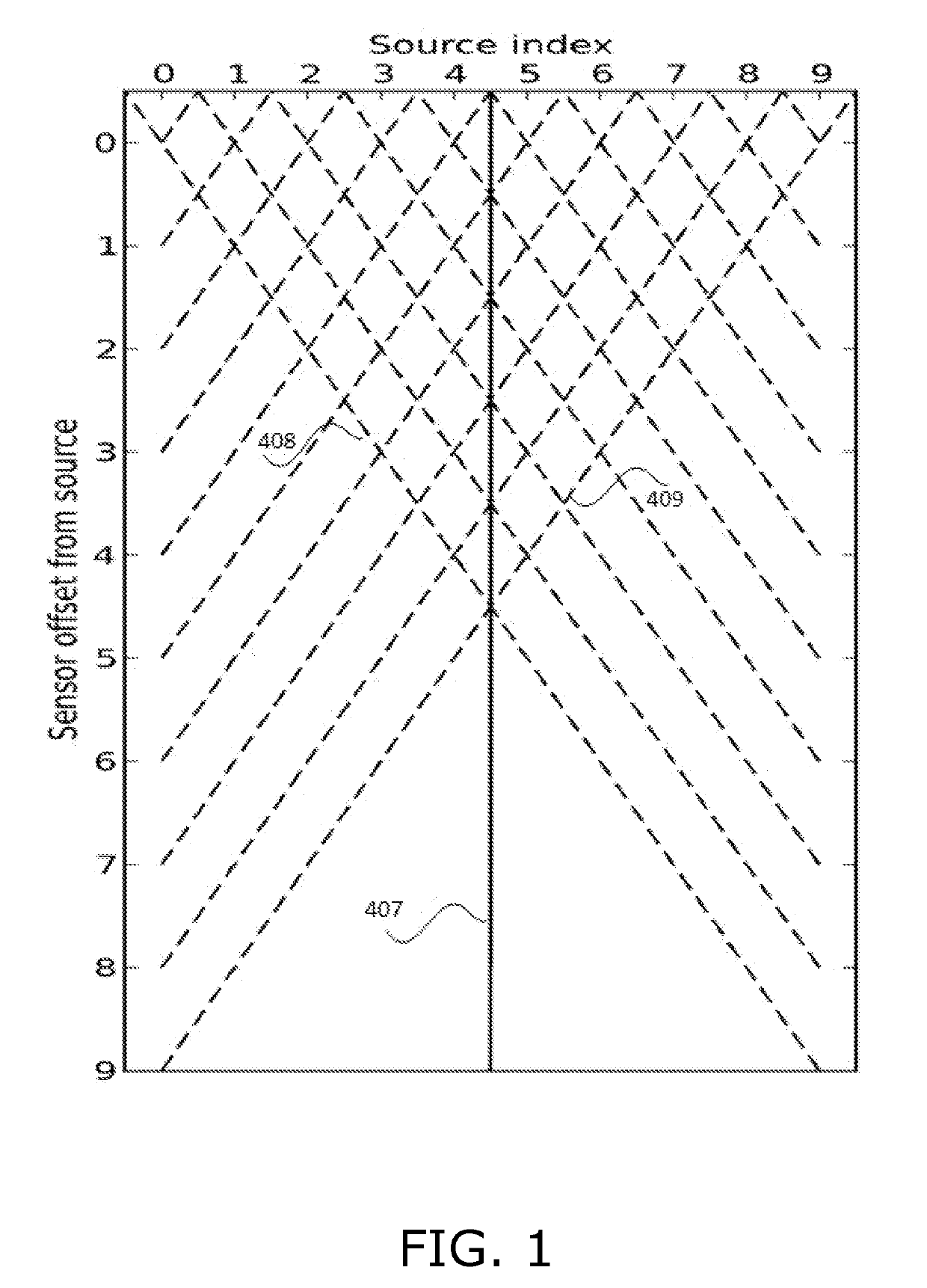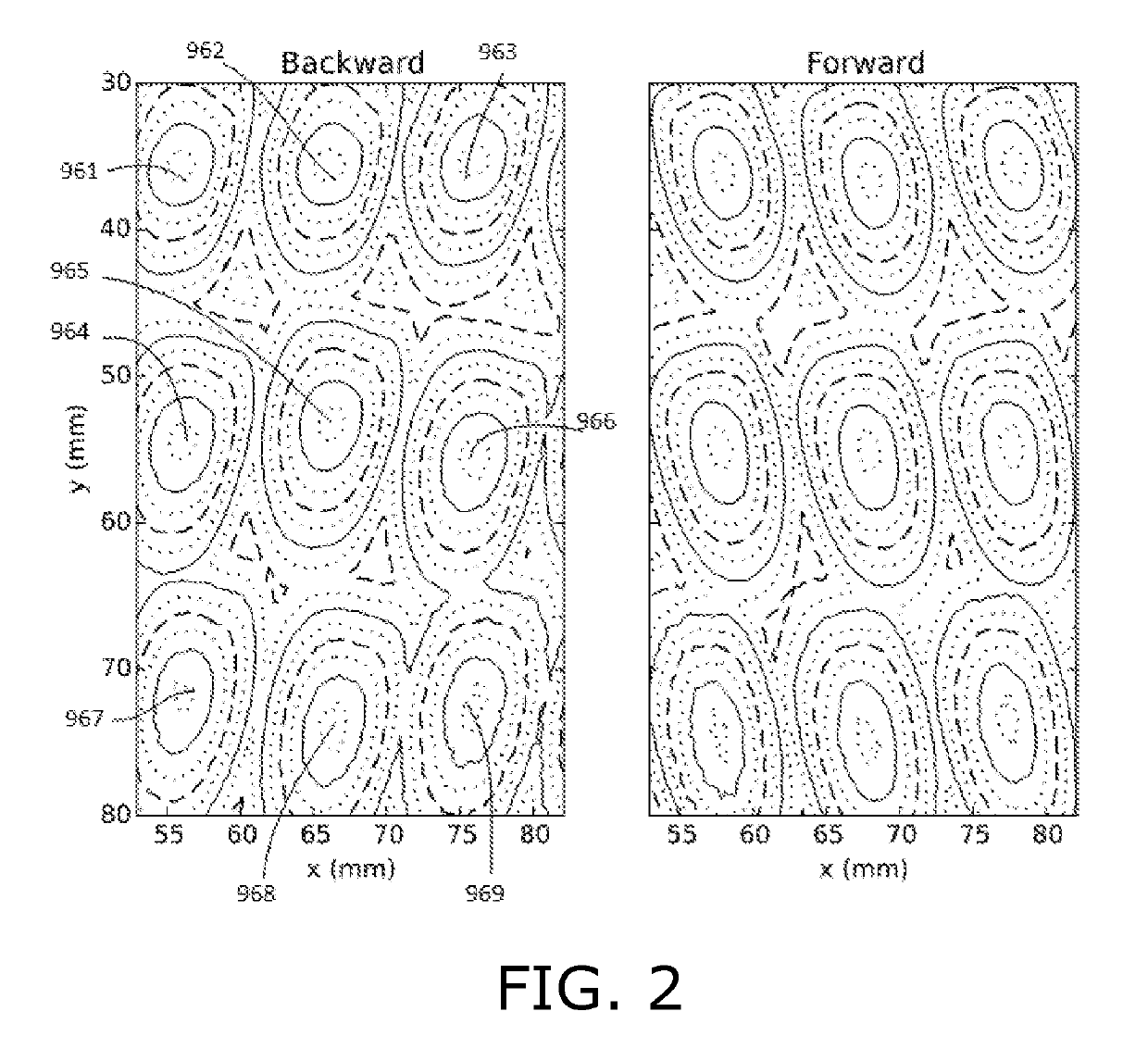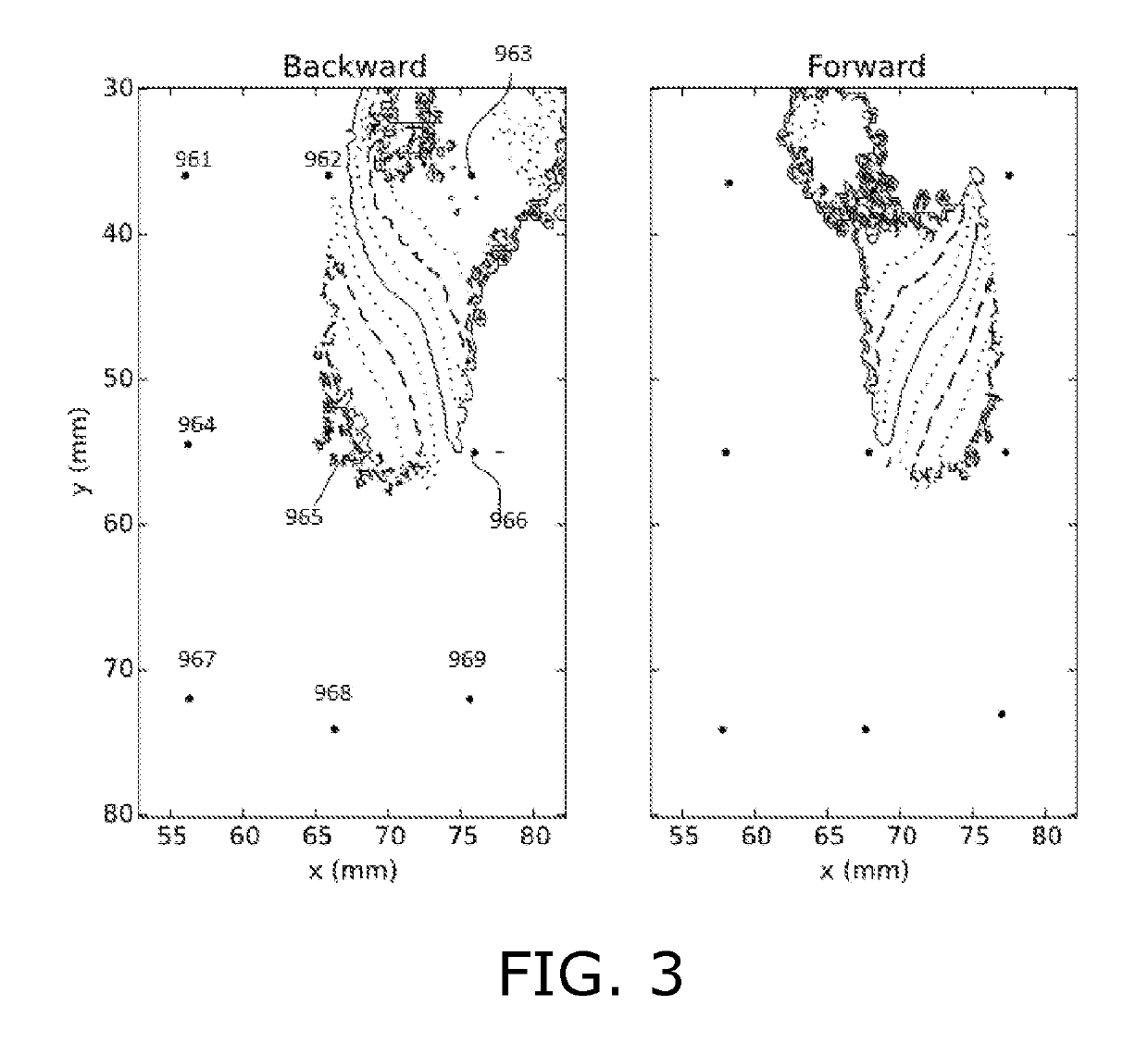Interactive virtual display
a virtual display and interactive technology, applied in the field of interactive virtual displays, can solve the problem of how accurately it can work with a touch sensor
- Summary
- Abstract
- Description
- Claims
- Application Information
AI Technical Summary
Benefits of technology
Problems solved by technology
Method used
Image
Examples
Embodiment Construction
[0146]Throughout this description, the terms “source” and “emitter” are used to indicate the same light emitting elements, inter alia LEDs, VCSELs and lasers, and the terms “sensor” and “detector” are used to indicate the same light detecting elements, inter alia photo diodes.
[0147]Reference is made to FIG. 1, which is a simplified illustration of light being emitted from light sources along a solid line, and being reflected along dashed lines to light sensors, in accordance with an embodiment of the present invention. FIG. 1 shows a central beam 407, and reflection paths 408, 409 represented by the dashed lines to light sensors, in accordance with an embodiment of the present invention. All of the dashed lines in FIG. 1 represent paths of reflected light that are maximally detected as explained below. FIG. 1 shows how light is emitted in a collimated beam. Light that hits an object is reflected diffusely. Sensors detect maximum incoming light from reflections in two narrow corridor...
PUM
 Login to View More
Login to View More Abstract
Description
Claims
Application Information
 Login to View More
Login to View More - R&D
- Intellectual Property
- Life Sciences
- Materials
- Tech Scout
- Unparalleled Data Quality
- Higher Quality Content
- 60% Fewer Hallucinations
Browse by: Latest US Patents, China's latest patents, Technical Efficacy Thesaurus, Application Domain, Technology Topic, Popular Technical Reports.
© 2025 PatSnap. All rights reserved.Legal|Privacy policy|Modern Slavery Act Transparency Statement|Sitemap|About US| Contact US: help@patsnap.com



